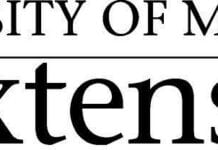Originally published Jan. 18, 1969
Embroiled . . .
Many Missouri churches, including some in Carthage, have become embroiled (in some cases without their knowledge or consent) in a contest to determine whether a farm workers’ union shall be organized in California for the benefit of migrant grape pickers.
Their involvement comes through denominational affiliation with the Missouri Council of Churches which has joined with the National Council of Churches, the United Farm Workers Organization and its spokesman Ceasar Chavez, the American Civil Liberties Union, the AFL-CIP and the federal Office of Economic Opportunity to promote and international boycott of California grapes.
The involvement includes heavy financial support to Chavez, support coming in part out of the tithes and offerings contributed by church members in support of the church and its ministry.
The Missouri Farm Bureau Federation has charged Chavez tells a distorted side of the farm labor crisis in California and many listeners have “swallowed a story of underfed, poorly housed, underpaid, migrant grape pickers being thwarted in their attempts to organize . . .
In an editorial, the Missouri Farm Bureau News declared, “These listeners jumped at the opportunity to serve humanity” and gave their support to the grape pickers and the subsequent secondary grape boycott.
C. R. Johnston, Missouri Farm Bureau Federation president and former Carthagian was quoted in the editorial report as saying, “Many farmers, consumers and church members won’t see the boycott as a threat to our free, competitive enterprise system. The union drive to force grocers to take California grapes off their shelves not only takes away the right of consumers to choose what they want to eat but outlaws the right of a private businessman to run his own business. Yet church leaders and member … have supported the grape boycott and collected funds to keep it going. Many farmers don’t realize that if a union can take grapes off a supermarket shelf, it can also stop the sale of any other food product. Don’t let other organizations tell you and others what to buy. Continue to buy grapes and urge others to do the same.”
It is the opinion of this writer and of considerable numbers of his friends and acquaintances that this is a matter which clearly is no business of the churches of Missouri.
Even if one assumed that the churches become involved in such matter – and we do not assume this – it is obvious few Missourians have sufficient information on which to base an intelligent judgment of the California conflict.
One cannot help asking, is it really a part of the mission of the church to tell us whether we should buy grapes at the grocery and if so from whom we should buy them?
The Missouri Council of Churches through promotional material printed and mailed at cost of its affiliate denominations has implied it would like our editorial support for this boycott.
It will not receive such support for two reasons: (1) we believe the church fails into the gutters of human affairs and fails to fulfill its eternal mission when it becomes embroiled in political and economic contests in which it never has been committed by ifs Founder and (2) we lack sufficient information to take a stand on this issue and are certain that observers on the scene in California are capable of handling the problem without our interference.
Perhaps it’s time for people within the various affiliated denominations seriously began to question their leaders about the motives of the Council and about whether they ought to remain a part of it.
Industrious Youth . . .
When it comes to the younger generation, the hippies and yippies get many headlines. However, the majority of American’s young people are hard at work preparing themselves to enter the labor market and to make constructive contributions to their society while supporting themselves.
According the Finance Facts, monthly newsletter on consumer behavior published by the National Consumer Finance Association, about half the young men between 16 and 21 who are in the labor force also are enrolled in school.
The young women are industrious too, with about one third of the same age group holding down some type of job while also attending school. Fewer than three per cent of these young people have chosen to drop out of school and the labor market.
Whether in or out of school, educational attainments of the 16-24 labor force is significantly higher than in 1960. Among those who are out of school and working about three fourths are high school graduates, compared with fewer than two thirds in 1960.
College enrollment has skyrocketed during the last 10 years and labor force participation of students now is the highest since World War II.
This gives reason for renewed confidence in young people because recent tendency shows they are industrious and better educated than their predecessors for the most part. Job Hunting will be easier for them because fewer young people will be inexperienced when they enter the labor force on a permanent basis.
Banning Boom …
Censorship of books at the local level is on the increase in Missouri, according to Paul L. Fisher, director of the Freedom of Information Center at the School of Journalism, University of Missouri, Columbia.
Fisher said his opinion that censorship forces are gaining the state is based on statements from librarians and teachers of English replying to questionnaires in connection with a conference on censorship planned Feb. 7 on the Columbia campus.
As an example of the thinking of censorship forces across the country, Fisher said one group might gauge the patriotism of an author by the number of times the word flag appears in a publication. Another organization published a list of 98 words it viewed with suspicion in history texts. The words included cooperation, international and poverty.
“When a book is banned or becomes a candidate for banning in one area” Fisher added, “the publicity has a brush fire effect spurning censorship forces elsewhere to follow suit.”
For those of you concerned about freedom of the press, this has all the earmarks of a contagious disease.















